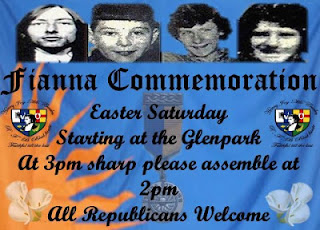The following is copied from the Belfast Telegraph today (7 December 2013). It relates to contact between the Communist Party of Ireland, the Provisional IRA and the MK [Amkhonto we Sizwe or Spear of the Nation], the military wing of the African National Council in South Africa.
Some details of IRA aid to MK, ANC's military wing were revealed by Kader Asmal, a South African minister, in a biography published in 2011.
While living in exile in Dublin, Mr Asmal was a member of the ANC, but opposed IRA violence and had no links to Sinn Fein.
So, when the ANC asked him to secure military training from the IRA, he turned for help to Mick O'Riordan, leader of the Communist Party of Ireland.
He wrote that after Mr O'Riordan contacted Gerry Adams, IRA explosives experts gave MK militants a fortnight's training at camps in Angola.
IRA members later carried out reconnaissance on south Africa's Sasolburg oil refinery in preparation for an MK attack.
This raises a number of points:
(1) The Communist Party of Northern Ireland and then the Communist Party of Ireland kept a low profile in the years leading up to the Troubles and indeed throughout the Troubles. They played a significant role in the early years, particularly in the Northern Ireland Civil Rights Association, but generally stayed under the radar. Nevertheless any study of the civil rights movement and the early years of the Troubles must take account of the CPI, including those members who transferred to the Official IRA.
(2) This revelation by Kader Asmal, who also played a role in the civil rights movement, is another very tiny piece in the jigsaw of the Troubles and probably that is how the jigsaw will develop. As the years go by one little piece after another will emerge. However many of the pieces will never emerge and will be taken to the grave as more and more of the protagonists die.
(3) Gerry Adams was able to supply IRA explosives experts to the ANC.
(4) While he was in Ireland, Kader Asmal was a member of the ANC and the Irish Anti-Apartheid Movement. He was not a member of Sinn Fein but he was one of the people involved in the formation of the Northern Ireland Civil Rights Association, along with members of Sinn Fein and the CPI.

















